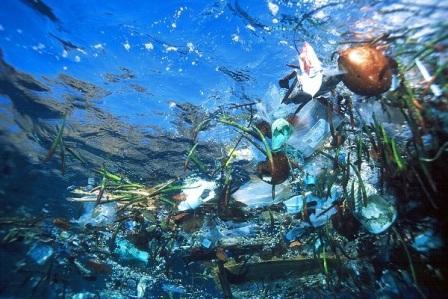 Photo credit: cesarharada.com
Photo credit: cesarharada.com
Its name is misleading because the huge expanse of floating marine debris is actually more like a soup of confetti-sized plastic bits, produced by the runoff of our throwaway lifestyle that has made its way into our oceans.
The Great Pacific Garbage Patch, the most notorious stretch of plastic debris, is located northeast of Hawaii, about 1000 miles from Hawaii and California. It’s an enormous and immeasurable area of marine debris, trapped by one of the five major subtropical gyres (systems of ocean currents) that corrals and carries marine garbage into its vortex. 5 Gyres, an organization that partners with Moore’s Algalita Marine Research Foundation to study plastic pollution in the ocean, has sent expeditions across the North Pacific Gyre, the North and South Atlantic Gyres and the Indian Ocean Gyre and found plastic in every one of them, though concentrations vary. Some reports have estimated the Great Pacific Garbage Patch to be twice the size of the continental United States, but no one can accurately measure the boundaries of the trash gyres because they are vast, remote and always shifting with ocean conditions. In any case, plastic marine debris is now found on the surface of every ocean on Earth.
Some plastic and marine debris comes from fishing gear, offshore oil and gas platforms, and ships. But 80 percent of it comes from the land—litter that gets stuck in storm drains and is washed into rivers and out to sea, the legal and illegal dumping of garbage and appliances, and plastic resin pellets inadvertently spilled and unloaded by plastic manufacturers. Trash Travels, Ocean Conservancy’s 2010 report, states that 60 percent of all marine debris in 2009 consisted of “disposable” items, with the most common being cigarettes, plastic bags, food containers, bottle caps and plastic bottles. And no matter where the litter originates, once it reaches the ocean, it becomes a planetary problem as garbage travels thousands of miles carried by the gyres.
/articles/our-oceans-plastic-soup-earth-institute